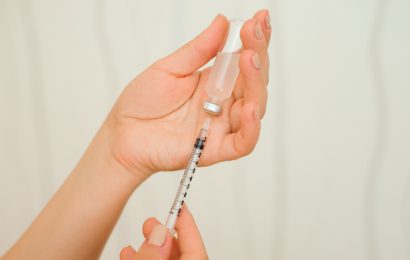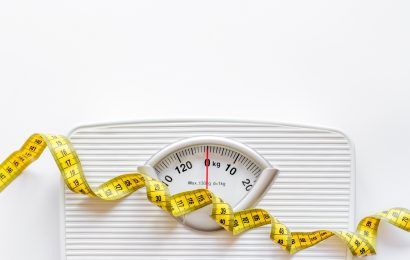“Needleless” acupuncture can provide relief for people dealing with diabetic gastroparesis, according to new research recently presented at the 2013 Digestive Disease Week meeting in Orlando, Florida. As many as 50% of people with diabetes will develop gastroparesis.
Gastroparesis, most commonly caused by damage to the nerve fibers that control the movements of the stomach, is a condition in which the stomach’s ability to move food into the small intestine is reduced. This slow stomach emptying results in a variety of symptoms, including nausea, vomiting, feelings of fullness after eating, a lack of appetite, discomfort in the upper abdomen, and bloating. Various medicines, gastric electrical stimulation, Botox injections, and intravenous nutrition are among the treatments currently available.
To determine whether stimulating acupuncture points on the skin via electrical stimulation (rather than needles) could control symptoms in people with diabetic gastroparesis, researchers enrolled 12 people — four men and eight women, with an average age of 51 — in an eight-week study. Participants were randomly assigned to receive either four weeks of electrical stimulation of gastrointestinal-specific acupuncture points via watch-sized stimulators or four weeks of a sham (inactive) treatment. At the end of this period, the participants were switched to the alternate treatment for the remaining four weeks of the study.
“Active” treatments involved placing stimulators at acupuncture points p6 (just above the wrist crease) and ST36 (on the front of the leg, just below the knee). As stated by study author Richard W. McCallum, MD, “Those points, according to Chinese medicine, tap into control centers for nausea, heartburn, and regurgitation. They also are near nerves.” Inactive treatments, for the purposes of this study, involved placing stimulators at point S1 on the forearm and S2 on the lower leg, which are not thought to have any effect on central nausea control centers in the body. In both versions of the treatment, the stimulators were to be turned on for at least two hours after meals, and for up to 300 minutes each day.
At the end of the month-long active treatment, the frequency of both heartburn and reflux had decreased in those receiving the active treatment, although not by an amount that reached statistical significance. Abdominal fullness and vomiting also decreased by 21% and 31%, respectively, in those receiving the active treatments compared to the inactive treatments.
Electrocardiograms taken at the end of each treatment period indicated that the active treatments worked by stimulating the vagus nerve, a nerve that extends from the brain to the abdomen. Researchers theorized that the stimulation might improve stomach emptying by contracting muscles in the upper gut.
“One of the biggest challenges in patients who have diabetic gastroparesis is that symptoms can make it very difficult for them to adequately control their diabetes. Improving these symptoms allows them to consistently eat a more appropriate diet and have more predictable use of insulin and other medications,” noted Jay Kuemmerle, MD, moderator at a press conference to announce the results.
Because the study has not yet been published in a peer-reviewed journal, the findings should be considered preliminary. The researchers hope to test this treatment approach in people with conditions such as inflammatory bowel disease.
For more information, read the article “Acupuncture Points Useful in Diabetes Control?” or see the study’s abstract on the Digestive Disease Week 2013 Web site. (Click on “MyDDW,” then “Search Scientific Sessions” and search for “Self-administered needleless acupuncture therapy to control dyspepsia and GERD symptoms in patients diagnosed with diabetic gastroparesis.”) And for more on treating gastroparesis, click here.




